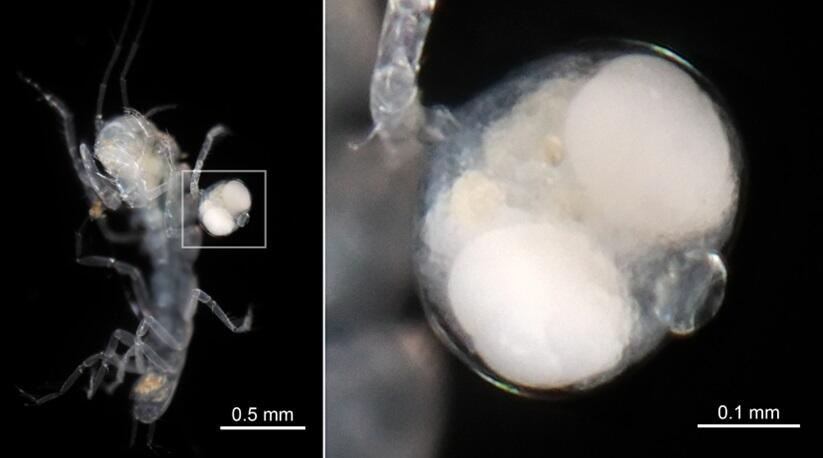Many mysteries remain in the deep sea, also known as the Earth's last frontier, particularly in the ultra‐deep sea of a depth of more than 6500 m. A research group led by Lecturer Keiichi Kakui of the Faculty of Science, Hokkaido University, graduate student Jun Fukuchi of the Graduate School of Science, Kyoto University; and Project Researcher Mizuki Ohta of the Atmosphere and Ocean Research Institute, The University of Tokyo, discovered a new species of parasitic crustacean belonging to the genus Diexanthema in the ultra‐deep region of the Kuril‐Kamchatka Trench.
During a biological survey of the ultra‐deep‐sea area by researchers on the scientific research vessel 'Hakuho Maru' in 2022, the research group discovered round fruit‐like objects hanging from the legs and bodies of deep‐sea isopods collected from a depth of 7184‐7186 m in the Kuril‐Kamchatka Trench. The object, which was so small (approximately 0.4 mm in diameter) that it could have been missed even under a microscope, was an animal, a parasitic species belonging to a group of crustaceans known as copepods, which includes cyclops found in ponds.

©Keiichi Kakui
Detailed observations revealed that this parasitic species of copepods crustaceans belonging to the genus Diexanthema was previously reported only from depths shallower than 3550 m in the North Atlantic as an unnamed (undescribed) species. They therefore reported the new species as Diexanthema hakuhomaruae. The results have been published in Acta Parasitologica.
Journal Information
Publication: Acta Parasitologica
Title: Diexanthema hakuhomaruae sp. nov. (Copepoda: Siphonostomatoida: Nicothoidae) from the Hadal Zone in the Northwestern Pacific, with an 18S Molecular Phylogeny
DOI: 10.1007/s11686‐023‐00676‐z
This article has been translated by JST with permission from The Science News Ltd. (https://sci-news.co.jp/). Unauthorized reproduction of the article and photographs is prohibited.




